calsfoundation@cals.org
William Orlando Darby (1911–1945)
Brigadier General William Orlando Darby, born in western Arkansas, is best known for his organization of the First Ranger Battalion during World War II. He was known as an exemplary leader in combat, and he always led his men into battle.
Bill Darby was born on February 8, 1911, in Fort Smith (Sebastian County). His father, Percy Darby, owned a print shop, and his mother, Nell, was a homemaker. He had a younger sister named Doris.
Darby attended Belle Grove School through the sixth grade and then went to Fort Smith Senior High School. After his graduation in 1929, he received an appointment to West Point Military Academy, where he served as a cadet company commander. He graduated from West Point with a BS on June 13, 1933. He was commissioned as a second lieutenant and assigned to the First Battalion, Eighty-second Field Artillery of the First Cavalry, the only mounted artillery unit in the army, at Fort Bliss, Texas. He was promoted to captain on October 1, 1940, and later received amphibious training.
He was assigned as aide-de-camp to Major General Russell P. Hartle, commander of the Thirty-fourth Infantry Division, shortly after the bombing of Pearl Harbor in 1941 and deployed with the division to Northern Ireland in January 1942. General Hartle chose Captain Darby to organize and train a new elite commando unit. Darby received a promotion to major, and the official activation of the First United States Army Ranger Battalion took place on July 9, 1942.
Darby went into action when his rangers spearheaded the Center Taskforce as a part of Operation Torch under the command of Major General Lloyd Fredendall during the November 8, 1942, North Africa Invasion. Darby’s unit executed a number of successful night attacks.They landed at Arzew, Algeria, near Oran, where Darby served as the military mayor of the city for several months until he and his troops were sent to the Tunisian Front.
Near the close of the Tunisian Campaign, Darby set about training and expanding the rangers into three battalions. On July 10, 1943, the First, Third, and Fourth Ranger battalions spearheaded the invasion of Sicily. The three ranger battalions were the first to land during the invasion of Italy on September 9, 1943. Early in the morning of January 22, 1944, they landed unopposed in the harbor of Anzio. They had control from the moment they landed. On January 30, 1944, the First and Third battalions, however, suffered severe casualties in the battle for Cisterna, Italy, and were consolidated with the First Special Service Force. The Fourth Battalion also suffered heavy losses and now alone made up the ranger force.
Darby was reassigned to head the 179th Infantry Regiment, Forty-fifth Division on February 17, 1944. He reorganized the broken regiment into a serviceable unit after they played a role in saving the Anzio beachhead. Later that year, Darby was ordered back to the United States.
After a trip home, he was appointed as a section chief of the General Staff’s War Plans Division at the Pentagon, serving approximately eleven months in this office. Darby was eager to get back into action and was able to return overseas on an inspection tour of the European Theater in early 1945 with General Hap Arnold.
When Brigadier General Robinson E. Duff, assistant division commander of the Tenth Mountain Division, was wounded, Darby quickly volunteered to take his command. He received command and led the Tenth Mounted Division in the advance on Lake Garda. On April 30, 1945, he was in the process of outlining plans for the next day when a German shell exploded near his location. A piece of shrapnel hit him, and he was dead within minutes. Two days later, German forces in Italy surrendered. Darby received a promotion to brigadier general on May 15, 1945, the only soldier to receive such a promotion posthumously.
Darby received many awards, including two Distinguished Service Crosses, a Silver Star for “Gallantry in Action,” a Purple Heart, and a Combat Infantry Badge, as well as the British Distinguished Service Order.
Darby’s life is celebrated in many ways. Named for him are the USNS General William O. Darby, a U.S. Army troopship, which is now retired, as well as streets in many places. Cisterna, Italy, has a Darby School, and in his hometown of Fort Smith, the sister city to Cisterna, the senior high school he attended is now called the William O. Darby Junior High. Many army posts have training or airfields named after him.
Darby was originally buried in a military cemetery outside of Cisterna, Italy, but on March, 11, 1949, his body was returned to Arkansas and reinterred at the Fort Smith National Cemetery, just a few blocks from his boyhood home. In 2016, a statue of Darby was erected in Cisterna Park in Fort Smith. On May 17, 2023, the Fort Smith Veterans of Foreign Wars (VFW) post was granted approval to change its name of their post from Jim Taylor Post No. 8845 to the BG William O. Darby Post No. 8845.
For additional information:
Darby, William O., and William Baumer. We Led the Ways: Darby’s Rangers. San Rafael, CA: Presidio Press, 1980.
Jeffers, H. Paul. Onward We Charge: The Heroic Story of Darby’s Rangers in World War II. New York: New American Library, 2007.
Storey, Celia. “Memorial Clay.” Arkansas Democrat-Gazette, May 30, 2016, pp. 1E, 6E.
Wineland, Coy. “William Orlando Darby.” Journal of the Fort Smith Historical Society 44 (Fall 2020): 19–29.
Maranda Radcliff
Fort Smith, Arkansas
Staff of the CALS Encyclopedia of Arkansas

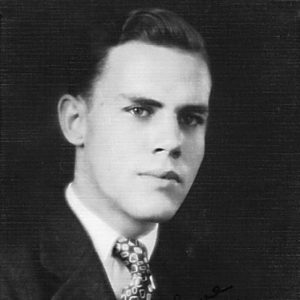 William Darby
William Darby 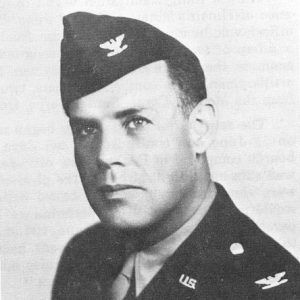 William O. Darby
William O. Darby 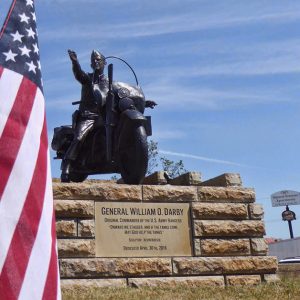 William O. Darby Memorial
William O. Darby Memorial 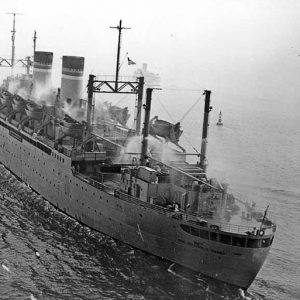 USNS General William O. Darby
USNS General William O. Darby 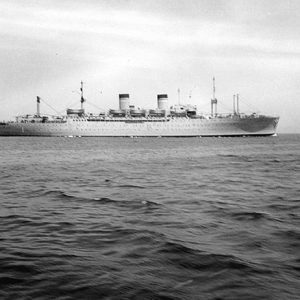 USNS General William O. Darby
USNS General William O. Darby 



The Cisterna Italy Delegation visited Fort Smith to celebrate forty years of being sister cities. The delegation was led by Former Cisterna mayor Gianni Salis, who reached out to Fort Smith to establish a Twin City relationship in 1984, forty years after the liberation of Cisterna. It was his fifth time visiting Fort Smith. The week-long visit was captured by HistoryDawg Live, a local historic filmmaker. Mayor Gianni Salis was a child when Colonel Darby and his Rangers came ashore at Anzio. Cisterna celebrated eighty years of Liberation in 2024 and forty years of sisterhood with Fort Smith. This was a major historic event in Fort Smith in 2024, and the relationship between Cisterna and Fort Smith is growing stronger each year. Here is the video on YouTube that includes actual Anzio Landing footage and footage from the Battle of Cisterna. At 54:22 minutes into the video, Mayor George McGill of Fort Smith praises Former Mayor Gianni Salis. It was a heartwarming event. https://youtu.be/faDl9xR7awI?si=ANwxf0dhSuQwkRjS